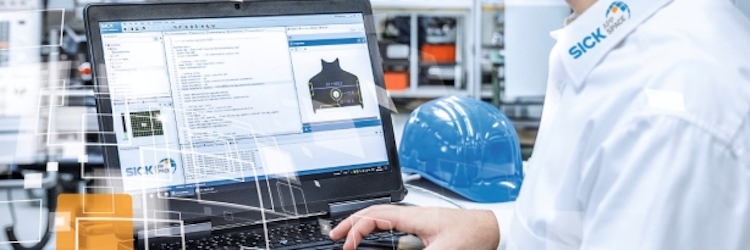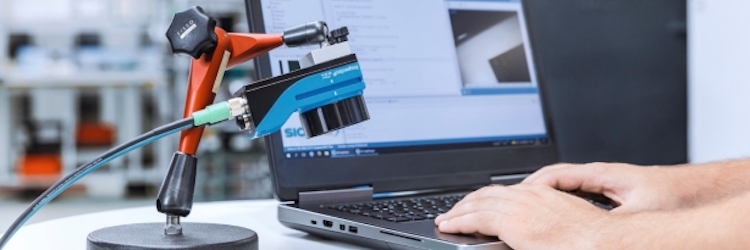
SICK AppSpace adds new functions for 2D and 3D machine vision integration
SICK AppSpace has added new functions to enable 2D and 3D machine vision integration.
The sensors specialist says the new functionality will enable system designers to “easily create individual SensorApps on their own without programming skills”.
The company says this will enable them to solve entirely new automation tasks.
The upgraded version of AppSpace will be released at the end of the year, and development will be possible in the SICK AppStudio, part of the SICK AppSpace ecosystem.
Dr Timo Mennle, SICK AppSpace strategic product manager at SICK, says: “Automation concepts are rarely standard.”

Even if you are supposedly dealing with a standard problem, additional configuration and customization work is required for many projects. These are details that could quickly result in higher costs and delays during installation.
SICK customers can create their own individualized SensorApps to solve individual sensor applications – without having to program anything.
SICK AppSpace opens doors
In the SICK AppSpace eco-system, programmable sensors and edge devices can be configured for new tasks using SensorApps. Many apps are already available for download via the SICK AppPool.
For specific applications, SensorApps can also be used independently by the customer and developed together with SICK experts and the support of a developer community.
Until now, basic programming skills were required to generate your own SensorApps in SICK AppStudio. That is no longer the case with the new AppPool.
With a new graphic interface in SICK AppStudio, users can now solve specific sensor applications, even without programming skills, by configuring and linking pre-defined function blocks in a data flow. The starting point is always figuring out what the sensor has to do.
Mennle says: “If a customer wants to differentiate between and count deodorant bottles using the cap color, the cusotmer creates a data flow from function blocks existing in a library.
“After every step, a preview of the result is generated and the configuration can be adjusted right away.”
Thanks to the open architecture of SensorApps, there is still the option of adjusting the source code of function blocks to implement more challenging applications and individual requirements.
New SensorApps for the AppPool
Mennle says: “By graphically processing data flows, we create the foundation for a larger target and user group. Then more users can take advantage of this for their applications.”
The rising demand for new and adapted function blocks can be satisfied from our growing community of developers. The diversity and possibilities of the SICK AppPool are growing, as are the fields of application of sensors and sensor systems.
